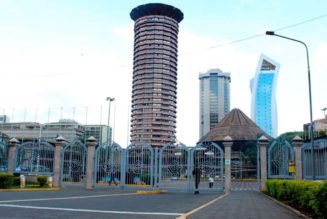Data Hub
Use private investors to power frontier counties
Monday August 07 2023

Power-generating wind turbines on Ngong Hills. FILE PHOTO | NMG
Kenya’s frontier counties remain behind a decade after devolution. In the 10 years after the new system, the region is largely underserved. All indicators are against shared prosperity and inclusivity.
The interventions by the government and non-State actors may be comforting and plausible for now but there is a need for long-term interventions to ensure critical pillars of economic renaissance for the underserved regions are identified and resources injected.
Read: What is derailing Kenya’s 100pc green energy goal
Leave No One Behind (LNOB) is one of the principles of the UN Sustainable Development Goals. It represents the unequivocal commitment of all UN member States to eradicate poverty in all its forms, end discrimination and exclusion, and reduce the inequalities and vulnerabilities that leave people behind and undermine the potential of humanity as a whole.
LNOB must then become a core focus in the economic transformation agenda which should underpin economic planning and renaissance efforts by the government for the underserved regions and counties.
One important cog in the economic transformation for the underserved regions is the provision of reliable electricity.
I had earlier alluded to the strong nexus between having a reliable power supply and achieving sustainable development and peace for the underserved north.
Providing universal access to affordable, reliable, sustainable and modern energy for all is the seventh Sustainable Development Goal (SDG) of the United Nations (UN).
In equal strength, the African Union’s (AU) Agenda 2063 highlights renewable energy as a priority pathway to achieving a prosperous continent with inclusive growth.
A report by Power Africa, a US government-led partnership (2020) states that both electricity access and mobile network coverage in Turkana County are sparse with an off-grid population of 80 percent.
West Pokot has an off-grid population of 62.7 percent whereas Isiolo has an off-grid population of 46.8 percent.
Marsabit has an off-grid population of 69.2 percent while Samburu has 62.4 percent. Mandera has an off-grid population of 76 percent, Wajir 68.2 percent, Garissa 47.8 percent while Tana River County has an off-grid population of 62.9 percent.
While the government notes that electricity is critical to achieving the economic and productive sector objectives defined in Vision 2030, Leave No One Behind requires urgent interventions in providing underserved communities with sustainable energy solutions.
One aspect the government can use towards increasing electricity provision and reliability in underserved counties is harnessing private sector investments into mini-grid and off-grid solutions.
This involves de-risking and scaling-up private sector investment in the off-grid sector. Often, the underserved regions are characterised by sparse populations and largely undeveloped land mass.
Due to decades of marginalisation, development and consumption of electricity in some rural townships may not be in tandem with significant investments required in providing electricity.
The risk-return profiles and small investment volumes may necessitate negative investor sentiments as to viability.
By de-risking and scaling-up private sector investment in the off-grid sector, the government may bolster the participation of the private sector in providing sustainable off-grid solutions to underserved regions.
Read: Renewable energy tipped to create 58000 new jobs
In de-risking the private sector investment, the government may partner with development agencies and partners to complement limited public finances that are available towards providing off-grid solutions to underserved regions.
De-risking investment
A learning brief by Oxford Policy Statement focusing on DRC identifies the following as measures to de-risk the private sector investment.
They include targeting underlying barriers that create investment risk, transferring risk by shifting risk from the private to public sector by use of guarantees, or credit lines to commercial banks and compensating for risk by increasing the return of investments through targeted subsidies for renewable energy.
Part of the guarantees to the private sector may also include binding power purchase agreements, timely payments by the off-taker, tariff buy-down mechanism and protection against foreign exchange risks.
Abdi Roba is a policy analyst.









